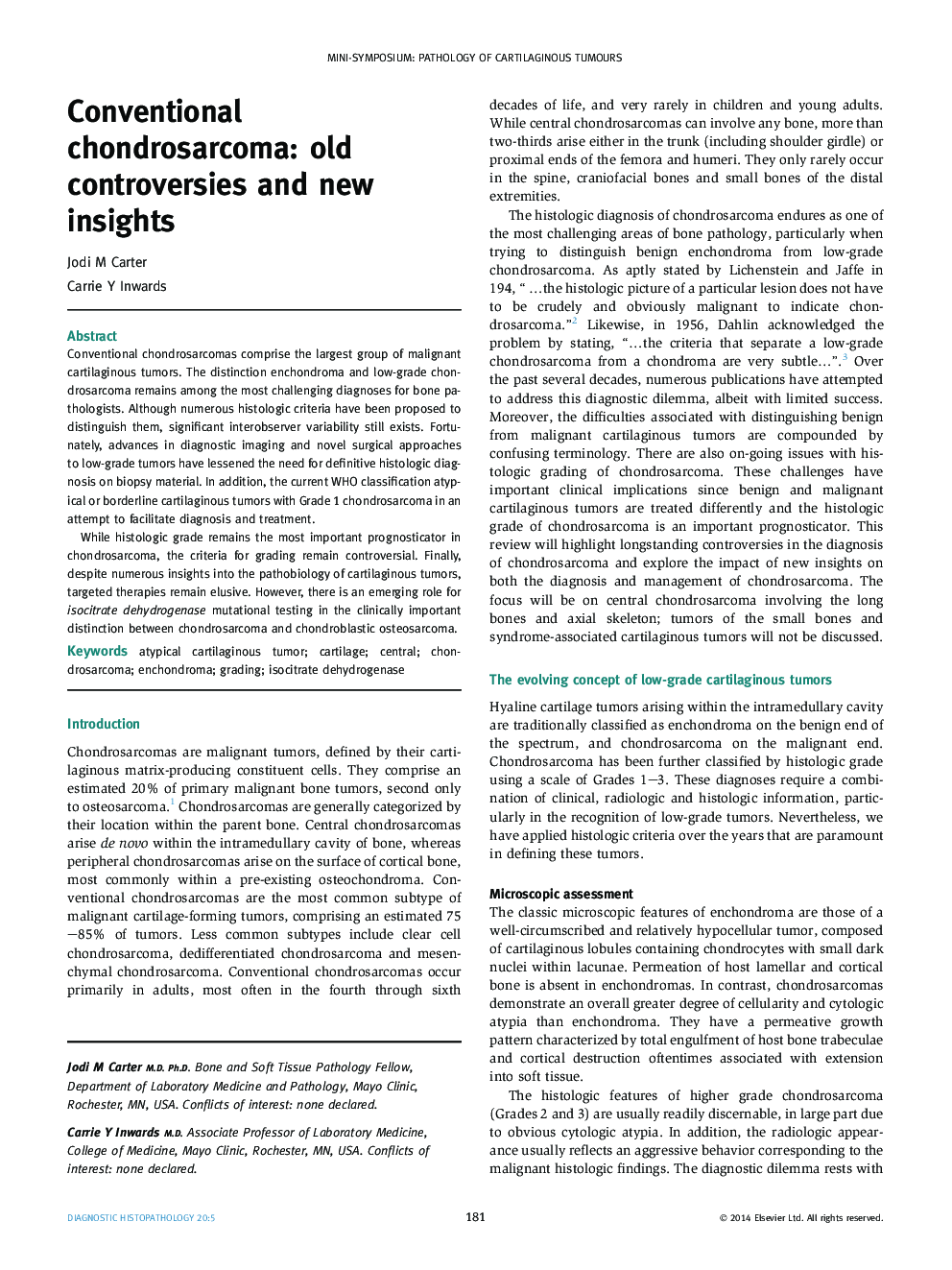| Article ID | Journal | Published Year | Pages | File Type |
|---|---|---|---|---|
| 4131174 | Diagnostic Histopathology | 2014 | 9 Pages |
Conventional chondrosarcomas comprise the largest group of malignant cartilaginous tumors. The distinction enchondroma and low-grade chondrosarcoma remains among the most challenging diagnoses for bone pathologists. Although numerous histologic criteria have been proposed to distinguish them, significant interobserver variability still exists. Fortunately, advances in diagnostic imaging and novel surgical approaches to low-grade tumors have lessened the need for definitive histologic diagnosis on biopsy material. In addition, the current WHO classification atypical or borderline cartilaginous tumors with Grade 1 chondrosarcoma in an attempt to facilitate diagnosis and treatment.While histologic grade remains the most important prognosticator in chondrosarcoma, the criteria for grading remain controversial. Finally, despite numerous insights into the pathobiology of cartilaginous tumors, targeted therapies remain elusive. However, there is an emerging role for isocitrate dehydrogenase mutational testing in the clinically important distinction between chondrosarcoma and chondroblastic osteosarcoma.
